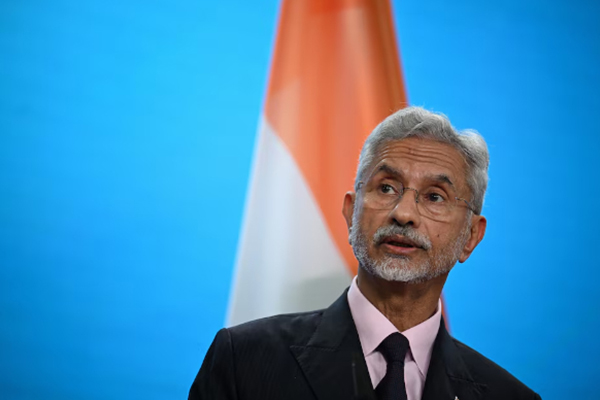
In the second and final part of our series on the impact of immigration in Germany, the author looks at the experience of Indians.
For the first part click here: https://stratnewsglobal.com/europe/germany/germany-i-asylum-seekers-refugees-driving-anti-foreigner-sentiment/
After World War II, as the then divided German nation (a capitalist west and a communist east) rebuilt, West Germany found itself in need of industrial labour. About 300,000 workers were needed annually to operate the country’s factories. They were brought in from abroad under a ‘guest worker’ scheme, wherein foreigners could work in Germany for a number of years, after which they were expected to go home.
Approximately 14 million such workers came to Germany in the 1960s. Eleven million left in 1973 when their roles were terminated, while three million stayed. Their children, even if born in Germany, did not automatically receive citizenship. Until 2000, it was not possible for immigrants without German ancestry to be naturalized.
That year, a provincial German politician caused a furor. In opposition to the federal government’s proposal to bring in 20,000 foreign IT-workers from, among other places, India, he coined a slogan: ‘Kinder statt Inder’ (‘Children instead of Indians’).
He argued that instead of addressing the failure of Muslim assimilation into German society, the country was adding Hindus into the mix. The solution to a shortage of computer experts, he suggested, was to invest in technical education for German children rather than importing foreign workers.
While sensationally worded and likely offensive, the sentiments expressed — create local talent rather than patch over capability shortfalls with hired foreign labour — might not have been totally nonsensical.
Germany has come a very long way in the last 25 years, in terms of assimilation. Not only skilled workers, but even some of the refugees who entered the country in 2015 have become citizens, having learnt the language and found jobs. One sought election to the Bundestag, before racist threats forced him to withdraw.
Those who follow German politics would hardly be surprised: borrowing from the guest worker example, the country can be welcoming, but not necessarily accepting. A guest whose stay is fixed-term and decided by a local employer can be welcomed. A migrant (in the general sense of a foreigner who wishes to stay for several decades, with unrestricted access to the labour market) might struggle to be accepted.
Racism for example, forced Germany’s first Africa-born black parliamentarian to resign in 2024. Strangely, just the previous year, a Syrian refugee was elected mayor of a village. Explaining this incongruity might come down to levels of visibility and impact: a local election is less central to one’s sense of a ‘national identity’, defined by cultural heritage and ethnicity. A federal election suggests an intrusion of wider foreigners into the seat of long-term policy-making.
Just because one is successful at winning over one’s immediate neighbours does not mean one can sprinkle magic dust and charm those dark corners of cyberspace where extreme and exclusionary ideas propagate.
German police noted in early 2025 that there had been a year-on-year increase in the number of online hate speech offenses. With India now being the fifth-largest net source of migrants to Germany, and the largest source of economic migrants (the first four are primarily countries from which asylum-seekers originate), there is cause for both celebration and concern.
In 2022, Germany and India concluded a Migration and Mobility Partnership Agreement. This aims to enable the movement of a minimum of 3000 professionals from India to Germany annually. In the two decades, the number of Indians living in Germany has risen seven-fold, from 40,000 to 280,000, with a sharp rise occurring in the last ten years, from 86,000 in 2015.
The Indian presence in Berlin has increased more than ten-fold from 3500 in 2015 to 40,000 at the start of 2025. German media coverage of this trend has been generally positive, but it is unclear whether the publicity being given to Indian migration will provoke a backlash.
In 2015, German media coverage of Indian workers in the country tended to be of an instrumental nature: how much their presence would benefit the German economy. The workers’ own views and experiences were less important. This calculus has not necessarily changed.
Some Indians who emigrated to Germany are considering moving to other countries due to the ongoing rise of anti-immigration sentiment in German society. Initially finding the country a good place to launch their careers, they seem to have encountered obstacles to career advancement thereafter.
Financially, the rewards are good: Indians are the highest-earning foreign professionals in Germany, with average incomes of 5,359 Euros per month. The next highest are the Americans, who earn 5095 Euros per month.
However, any talk about Indians being a model minority in Germany should be accompanied by a reminder of what happened in the US. There too, the high academic standards and strong work ethic of Indian professionals were celebrated for many years.
But once right-wing populism gripped American political discourse, the Indian-origin population ran for cover. They were viewed not as economically-productive assets but as ‘job stealers’. Their success was the object of envy, and their numbers and financial heft insufficient to protect them.
Reports of the German labour minister telling Indian science students at an event in Berlin, ‘Please stay Germany needs you’, might be soothing to read but they do not change broader societal attitudes. A survey has found that over half of foreign workers living in Germany (not only Indians) had faced discrimination in the real estate market, and over a third experienced it in public spaces.
Other studies have shown that school students with Turkish names tend to be awarded lower scores than students with German names, even when both have the same levels of academic achievement.
Asians especially are not recognized in Germany as being at risk of racist treatment. This means there are few institutional efforts to deal with the problem. As Indians become more numerous in German society, and some aspire to prominence in their local communities, they might experience what their compatriots in the US have faced.
Resentment Amidst Polarization
In 2024, German police registered a 48% rise in crime committed by right-wing activists and a 28% rise in crimes by left-wing activists. The year had a total of 84,000 politically motivated crimes, which was the highest since record-keeping began in 2001. Polarization means that across the political spectrum, extremist ideas are gaining ground and validating the need for each other.
Angela Merkel’s decision to let refugees into Germany in 2015 was a context-specific decision. Four days before she said ‘Wir schaffen das’, a meat truck filled with the decomposing bodies of 71 migrants was discovered in Austria. They had fled conflicts in either Afghanistan, Iraq and Syria. Angela Merkel said her counterparts in Vienna were ‘shaken by this terrible news’.
Her decision to permit entry to migrants was initially seen as a humanitarian reaction. But it also subtly positioned Germany as a moral leader for all Europe. By engaging in virtue signalling, Merkel enabled her country, which had long been self-effacing of its growing importance in European affairs, to take the lead in shaping continent-wide debates.
Alongside French President Francoise Holland, she told the European parliament on 7 October 2015 that ‘pan-European challenges are not to be solved by a few member states on their own, but by all of us together’. In so doing, she staked a claim to European leadership, which was unexpectedly strengthened the following year when Britain opted to exit the EU, leaving France and Germany as key powers inside the bloc.
This increased geopolitical and intellectual prominence has not been without cost. Germany received a third of all first-time asylum applications in the EU, and has been the favoured destination for asylum-seekers over the last decade. By the end of 2024, the number of refugees in Germany had more than quadrupled from 750,000 in 2014 to 3.3 million.
The German economy was the only one among the G7 that failed to grow for two consecutive years in 2023-24, having instead contracted. Its international soft power appeal has not been enhanced by Merkel’s decision, but rather dented because of a sharp increase in racially-motivated discrimination.
Worst affected have been black Africans. By 2023, Germany had the highest rate of increase in anti-black discrimination, with blacks thrice as likely to be unemployed as native Germans.
It would be incorrect to say that there is no middle ground in Germany between xenophobes and xenophiles. One survey found an almost resigned acceptance of the fact that Germany was bound to become more ethnically diverse, but this acceptance was accompanied by concerns over how the country’s traditional identity could be preserved.
As long as crime remains a serious public concern, public anxiety about cultural change will be reinforced by deeper, more visceral fears about personal safety. Such a grim reality cannot be wished away by sloganeering.
Prem Mahadevan is Senior Analyst, Global Initiative Against Transnational Organized Crime, Switzerland




